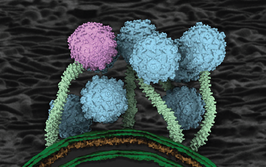De-risking Drug Development
Metabolism-based causes of drug attrition must be tackled through intelligent and early risk mitigation strategies.
Risk management has become an important discipline for firms developing new prescription drugs. It is said that only one of the 10,000 molecules entering drug discovery will ultimately reach the market – and, even then, it is not certain that expensive development costs will be recouped.
There can be few industries where the risk of failure is higher than in the drug development sector. Is it possible to shorten the odds a little? I believe so, but we need to understand the causes of drug attrition and deploy appropriate resources to gauge the level of associated risk. In short, we need to get better at identifying molecules that have a better chance of surviving the development process.
One successful technique for de-risking is to use advanced in vitro technologies and analytical techniques. These methods are ideal for early phase development because they are fast and require just milligrams of investigative compound (perfect for scarce or expensive materials). De-risking can focus on various sources of potential problems, but I believe that one of the most important is metabolic risk. Drug metabolism is often critical to a product’s success, but I find it is under-appreciated by drug developers. After administration, drugs may be acted on by members of one or more families of drug metabolizing enzymes (DMEs), of which the most important is the cytochrome P450 (CYP) family. Such metabolism can have a significant effect on the pharmacokinetic profile of small molecule drugs: it may drive clearance (especially for neutral, lipophilic molecules), influence population exposure in poor- and rapid-metabolizer sub-groups, result in drug-drug interactions, and cause some forms of toxicity. Consequently, the metabolites resulting from drug-CYP interactions have a major impact on the incidence of drug-related side-effects; for example, as a consequence of post-metabolic interactions between co-administered medications. These side-effects may cause approval delays at best – and, at worst, result in commercially catastrophic post-market withdrawal.
A de-risking assessment for drug metabolism should focus on how the drug is metabolized – for example, how it interacts with CYP enzymes and drug transporters – in in vitro assays. Early detection of metabolic liability not only gives developers the option of excluding high-risk molecules, but also may provide an opportunity to change the structural chemistry of the drug candidate.
There are three main elements of metabolic de-risking. The first element is drug-induced liver injury (DILI) – the single biggest cause of liver transplant in humans, and a major cause both of post-market safety-related drug withdrawal and of development-stage drug attrition. Where preclinical assessments indicate that a drug candidate has an elevated DILI risk, further development is highly risky. Although the causative pathways behind DILI remain unclear, there is increasing evidence that a key role is played by reactive metabolites (RM) formed as a consequence of drug metabolism. Consequently, RM detection is a key component of de-risking strategies.
The second element is drug-drug interactions (DDIs). As populations expand and individuals live longer, the frequency of individual patients being prescribed multiple, concurrent medications is increasing. This means the risk of adverse drug reactions due to DDIs is also growing, and this area of drug development is coming under increasing regulatory scrutiny. Hence, drugs with a high DDI potential may be at risk of non-approval, excessive labeling or post-market withdrawal. To test the DDI potential of a drug candidate, regulatory authorities recommend a range of in vitro studies (basic models) designed to identify both “victim” and “perpetrator” interactions. Perpetrator studies are designed to assess how the test drug will affect other medications, while victim studies are intended to assess how the test drug will be affected by other medications. They usually determine which enzymes and transporter proteins are involved in drug clearance (substrate/phenotyping interactions). Greater risks are associated with drug candidates that exhibit a victim profile.
The third element focuses on metabolites in safety testing (MIST). Much industry attention and regulatory concern has focused on the importance of drug metabolites as sources of drug toxicity. For any new drug in development, an early understanding of potential MIST issues is crucial to help guide the choice of animal models used in safety assessment – models must be metabolically relevant to the human condition.
Application of an intelligently designed and rigorous de-risking strategy will provide a comprehensive data set to support major investment decisions; indeed, de-risking the pipeline in this way increases the chances of developing a safe drug, and therefore increases the value of the pipeline. Increased value is clearly important to companies seeking to win external investment or aiming to sell/out-license their portfolio.
I strongly advise integrating metabolic de-risking strategies into the drug development program, especially given the increasingly risk-adverse environment in which the pharma industry operates.
Guy Webber is the Scientific Manager for In Vitro and Drug-Drug Interaction Sciences at Envigo, UK.



















